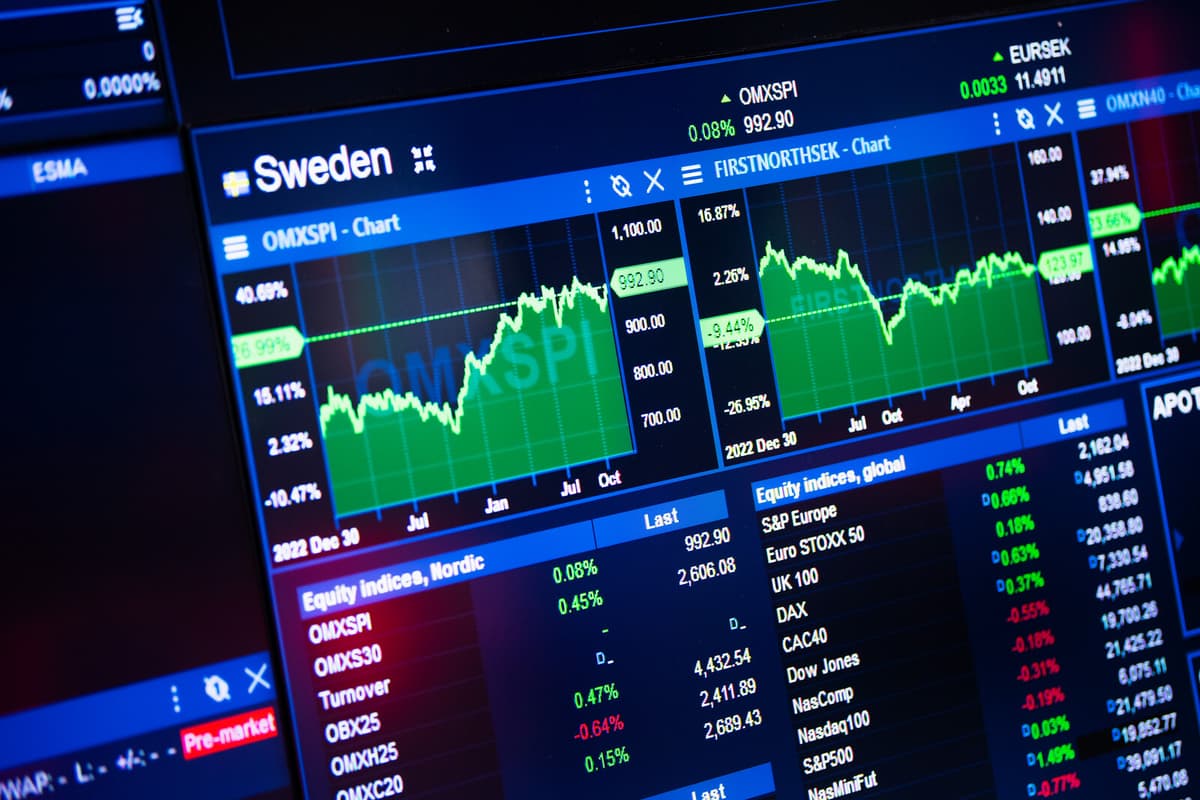Last year was characterized by a downturn, primarily on the New York stock exchange. However, so far this year, the leading European stock exchanges are at the top in a global comparison.
It's only been about three weeks into the new stock market year, but after Frankfurt and Paris, the Stockholm stock exchange stands out with an increase of over 6 percent for the broad OMXS index.
The European stock exchanges' opening is also in line with the development that Jon Arnell, investment manager at von Euler & Partners, predicted in a TT interview just before the Christmas holidays regarding his view on the development of the leading stock markets.
Overall, the sentiment has been extremely negative regarding Europe and the economy. Somewhere, it becomes too negative, and then many will think it's too cheap, he explains.
Performed strongly
The fact that European companies are now seen as much cheaper than their American counterparts, which went incredibly strong in 2024, contributes to attracting investors to look towards Europe instead. Another factor is the newly elected President Donald Trump's more cautious approach regarding statements on trade tariffs, which in theory would hit Europe hard.
All this has contributed to investors moving capital from the USA to Europe, which contributes to rising prices, says Jon Arnell.
Now we're seeing the highest inflows to Europe since 2015, and there have been some positive news as well. We've had reversed profit warnings from Zalando and Adidas. Ikea was out talking about seeing a return among consumers, so it's early signs of a turnaround among consumers.
January has historically been a strong month for the Stockholm stock exchange. Since the financial crisis in 2008, the OMXS index has only had a negative development in January on seven occasions. It performed best in 2023 with an increase of 7.9.
Fed can decide
In other words, this year's opening is not far off.
Among Swedish small investors, there is also a more distinct focus on Swedish stocks. Statistics from Avanza show that 8 out of the 10 most traded stocks between January 1-20 were Swedish. This can be compared to 6 out of 10 in December.
However, January will end with heavy news that can affect stock market developments, primarily the interest rate decision from the American Federal Reserve next week.
The market will focus on what is said going forward, how long will they keep the current interest rate, do they see any further reduction this year? That's what's important, says Jon Arnell.
2025. 6.8% (up to and including January 23)
2024. – 1.6%
2023. 7.9%
2022. – 9.8%
2021. 2.5%
2020. 1.2%
2019. 7.6%
2018. 1.7%
2017. 1.3%
2016. – 7.1%
2015. 7.2%
2014. – 1.6%
2013. 5.6%
2012. 6.0%
2011. – 1.0%
2010. 0.7%
2009. – 5.9%
2008. – 10.6%
Source: Avanza.





